| The analyses are best performed during the caterpillar phase.
This is where the main food intake takes place and the main detoxification mechanisms are active. For that the caterpillar's body must be able to grow very fast. |
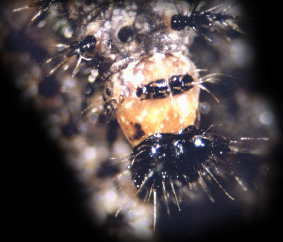 |
| The chitin integument needs to be changed several times in a caterpillar's life.
The first hint for an imminent skinning is the fore-shoving of the animals head-capsule. |
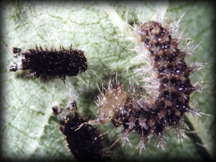 |
| After the old skin is stripped off,
the freshly moulted caterpillar is still very sensitive.
The chitin skin needs a few hours to cure completely. The picture above shows a caterpillar, which has moulted a few minutes ago. You still can see its old skin beside. In some species, the caterpillars change their appearance after every moulting. |
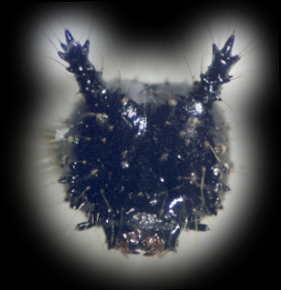 |
| The map butterfly caterpillar for example gets a pair of forehead cones in its third instar. |
|
The end of the larval stage is followed by pupation. | |
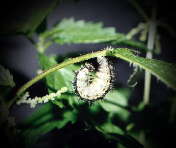 |
To succeed, the caterpillar needs to find an appropriate place. It trenches into the soil |
or attaches itself on a leaf stalk with its hind legs by way of a spinned silk pad. There it holds out until its final moult. |
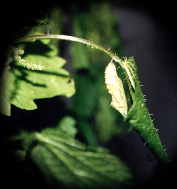 | |
During this stage the pupae's body completes under the final skin. · | ||